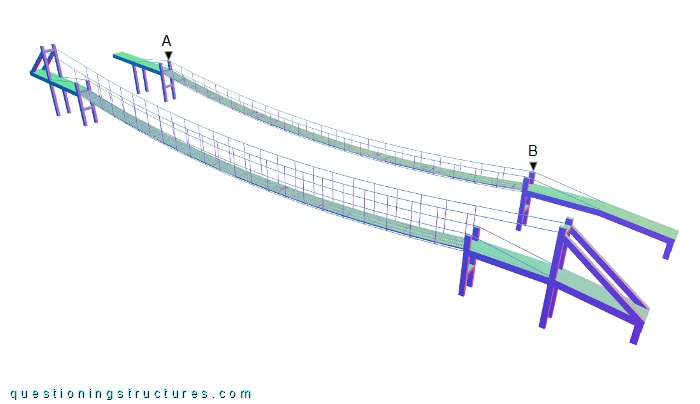General Information
Figure 1 shows a suspended bridge that is used by motorcycles, bicycles and pedestrians.
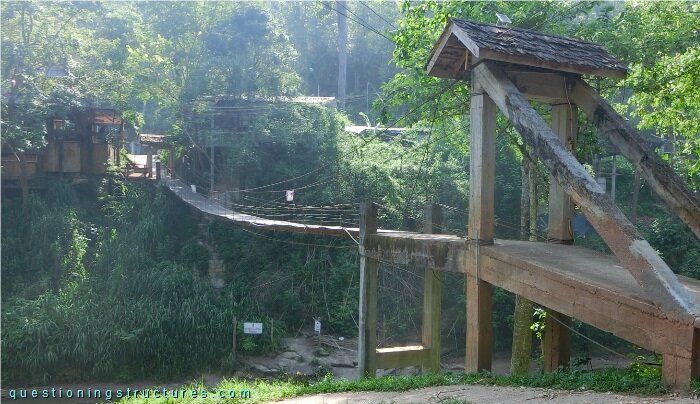
| Tower-to-tower distance | ≅ 35 m |
| Width | ≅ 1 m |
| Tower | Reinforced concrete |
| Girder | Steel transverse built-up section |
| Number of walkway cables | 3 |
Towers
Figure 2 shows a schematic lateral view of the bridge.
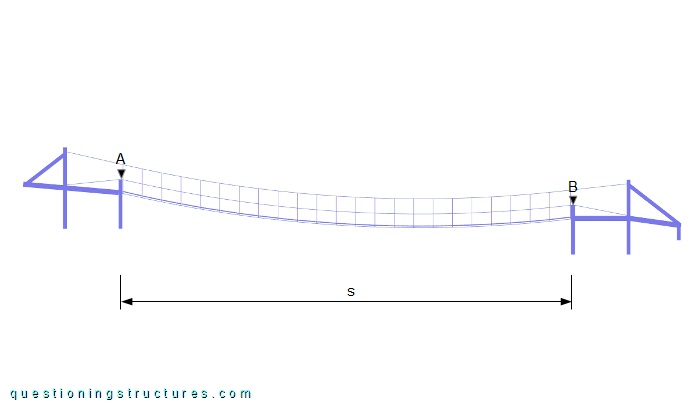
The span s ≅ 35 m, and the height difference between A and B is about 2 meters.
Figure 3 shows a side view of a tower.
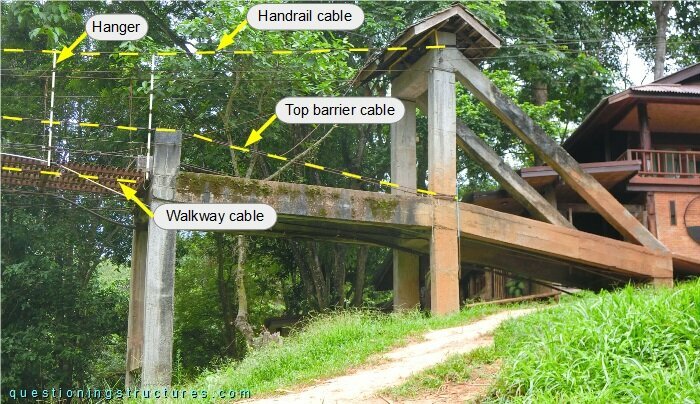
A tower is made of a front and a back (diagonal braced) unit; the former anchors the walkway and intermediate barrier cables, while the latter anchors the handrail and top barrier cables.
Bridge Cross-Section
Figure 4 shows a schematic cross-section of the bridge.
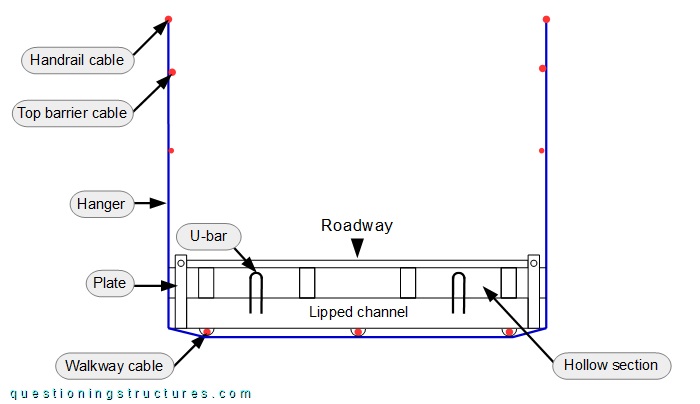
A girder consists of two side-by-side placed lipped channels over which are placed two side-by-side placed rectangular hollow sections. The lipped channels and the rectangular hollow sections are connected by U-bars and plates; the former are welded, while the latter are welded in the bottom region and bolted in the top-end region. The girder spacing is about 1.5 meters, and the floor system is framed. The hangers are made of steel wire ropes and run from the left handrail cable to the right handrail cable via the bottom side region of the lipped channels. The hangers are connected to the lipped channels by direct contact at the bottom edge and via the walkway cables at the channels' bottom sides. Figure 5 shows a bottom view of the bridge.
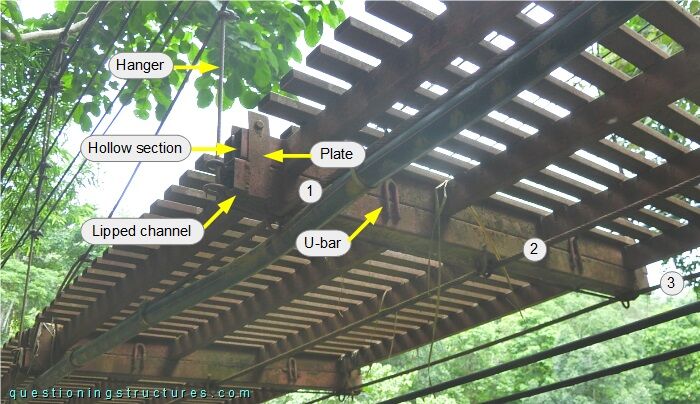
The walkway cables are marked by the numbers.
What are the main problems of the hanger to girder connection?
What are the main pros and cons between hangers made of steel wire ropes and hangers made of steel rods?
Alternative Variant
A schematic three-dimensional view of the applied variant and a variant with a single-unit tower are shown in figure 6.
